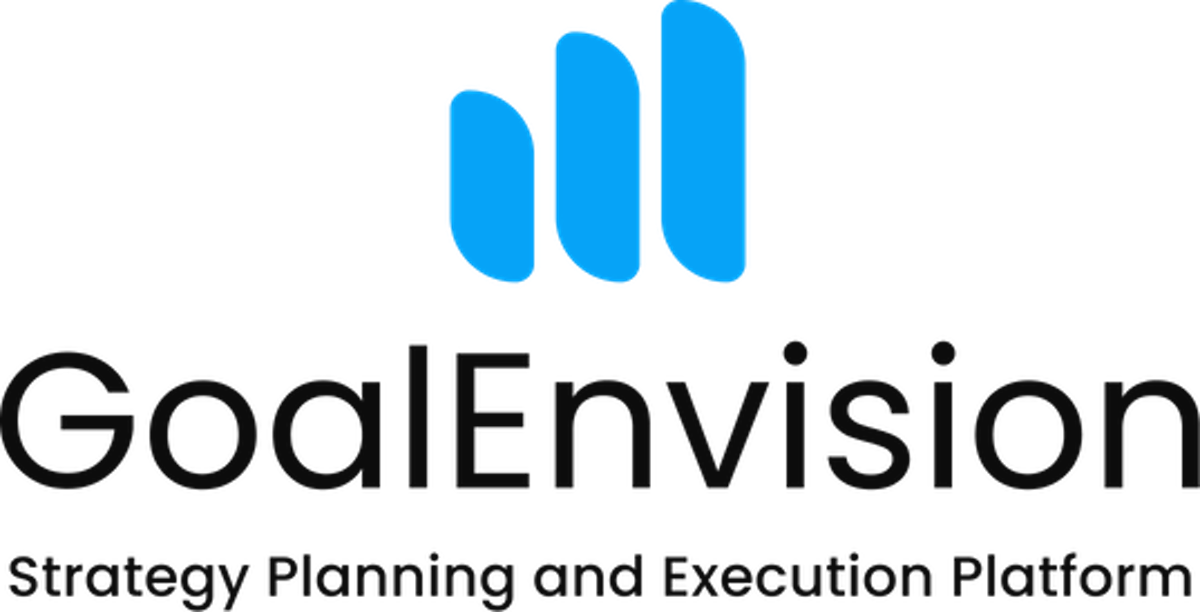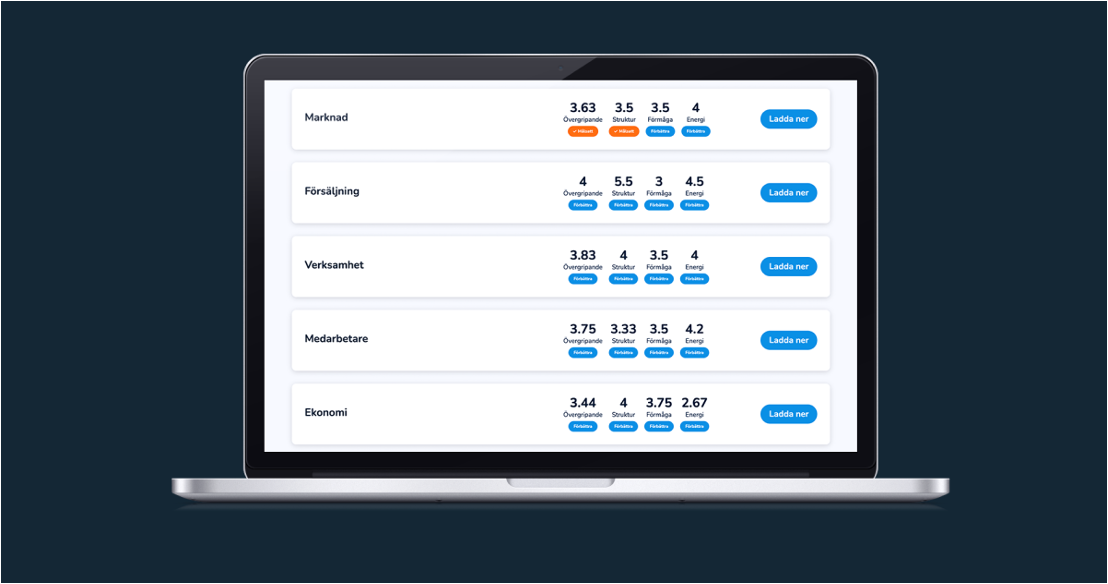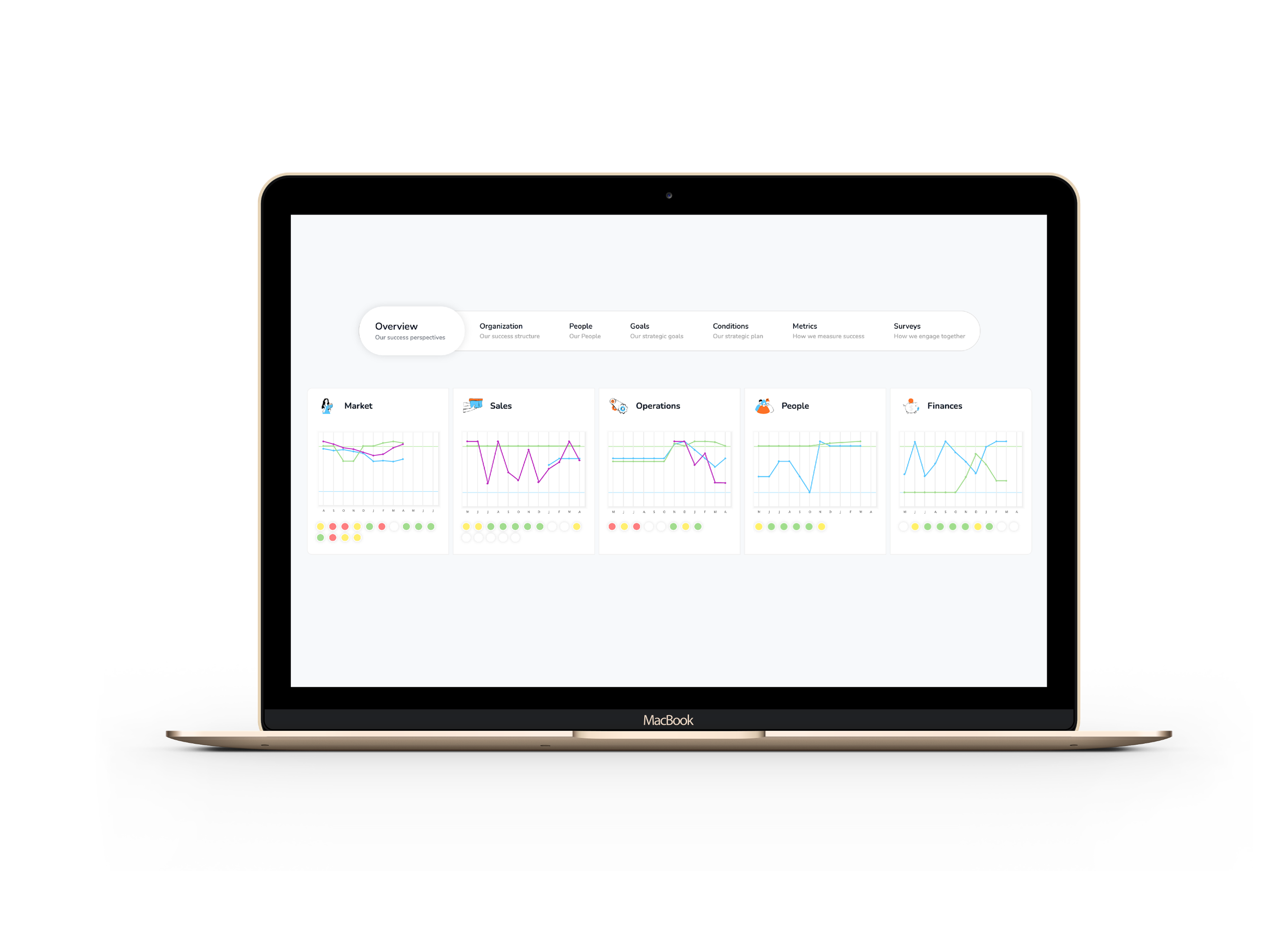How to create an effective business plan: A guide for CEOs and management teams of SMEs
Share this article
Creating a business plan is a crucial part of successful strategic planning and implementation. For CEOs and management teams of small and medium-sized enterprises (SMEs), a well-crafted business plan is not only a tool to set the direction of the company, but also a powerful means to attract investors, secure funding and guide day-to-day operations. In this article, we will go through the educational steps to create an effective business plan and how you can use GoalEnvision to ensure a smooth implementation.
1. What is a business plan and why is it important?
A business plan is a document that outlines your company's goals, strategies and plans to achieve those goals. It serves as a map that guides your business from start to success. A well-structured business plan usually includes:
- Summary: An overview of the company's purpose and objectives.
- Company description: Information about the company, its structure and owners.
- Market analysis: A thorough analysis of the market, including target audience and competitors.
- Organisation and management: Description of the company's organisational structure and management team.
- Product line or services: Details of the products or services offered by the company.
- Marketing and sales strategies: Plans for promoting and selling the company's products or services.
- Financial projections: Financial projections, including revenues, expenses and profitability.
- Appendices: Any additional documents that support the business plan.
2. Steps to create a business plan
Creating a business plan can feel overwhelming, but following these steps can make the process more manageable:
Step 1: Write an executive summary
The executive summary is the first section of your business plan, but it's often best to write it last. It should give a short, concise overview of the whole plan and pique the interest of readers.
Step 2: Describe your business
Provide a detailed description of your business, including its history, business model and goals. This section should also cover your company's unique advantages and competitive advantages.
Step 3: Conduct a market analysis
Analyse the market to understand your target audience and your competitors. Identify market trends, customer needs and potential challenges. This section should also include a SWOT (Strengths, Weaknesses, Opportunities, Threats) analysis.
Step 4: Define the organisation and management
Describe the organisational structure of the company and introduce the management team. This section should also highlight the experience of the members and how they contribute to the success of the company.
Step 5: Detail your products or services
Describe the products or services that your company offers. Explain their benefits and how they differ from competitors' offerings.
Step 6: Develop marketing and sales strategies
Outline how you plan to market and sell your products or services. Include strategies for pricing, advertising, sales and distribution.
Step 7: Create financial forecasts
Develop detailed financial projections for your business. This includes revenue projections, cost estimates, and profitability analyses. This section is critical to attract investors and secure funding.
Step 8: Put together supporting documents
Gather all relevant documents that support your business plan, such as market research, legal documents and product images.
3. Integrate the business plan into GoalEnvision for effective execution
Once you've created your business plan, the next step is to ensure that it is implemented effectively. This is where GoalEnvision comes into play. GoalEnvision is a powerful strategic planning and execution tool that helps you keep track of your goals and progress. Here's how you can use GoalEnvision:
Goal management: Set your business goals and break them down into manageable milestones.
Task management: Assign tasks to team members and set deadlines.
Monitoring: Use GoalEnvision to monitor progress towards your goals and adjust strategies if necessary.
Reporting: Create reports that show how well you're following your business plan and identify areas that need improvement.
A well-thought-out business plan is essential for SMEs that want to grow and succeed. By following the above steps, you can create a strong business plan that not only sets the direction for your business but also helps you attract investors and secure funding. Moreover, with the help of GoalEnvision, you can ensure that your business plan is implemented effectively and that your business achieves its strategic goals.
GoalEnvision, an alternative to a business plan
Creating a business plan is a traditional method of structuring a business' strategy. But for many SMEs, this process can be time-consuming and complicated. GoalEnvision offers a simpler and more transparent alternative to outline and implement your company's strategy. Here is an educational overview of how GoalEnvision works and why it can be a better choice than a traditional business plan.
Step by step in GoalEnvision
Create a vision
Description: Define the company's long-term goals to provide clear direction and inspiration.
How to do it: Log in to GoalEnvision, go to the organisation page and click on "Create Vision". Fill in the text field or use the AI function for help.
Formulate a mission statement
Description: Describe what the company does and what services or products it offers.
How to do it: On the same page as the vision, select the "Our mission statement" tab and type or paste your mission statement. Use the AI assistant if necessary.
Set growth targets
Description: Define specific goals for your business growth, for example, increasing sales by 10%.
How to do it: Go to the organisation page, click on "Add growth target" and enter the target and how you plan to measure success.
Create strategic goals
Description: Identify concrete actions and initiatives needed to reach the growth targets.
How to do it: Select the perspective, click on the corresponding button (e.g. "+ Sales Goal"), and formulate the goal and select the measurement method.
Determine the conditions
Description: Identify the necessary resources and support to achieve the strategic objectives.
How to do it: Click on "Add conditions" under a strategic goals and specify the resources, skills and motivators required.
Follow-up and adjustment
Description: Monitor the progress of the objectives and adjust the strategy if necessary.
How to do it: Use GoalEnvision tools to report results and review progress regularly. Use the traffic light system to keep track of the status of conditions.
Advantages of GoalEnvision compared to a business plan
Clarity and structure
GoalEnvision offers a clear overview of vision, business idea, growth objectives and strategic goals, creating a common thread that is easy to follow.
Simplicity and ease of use
The tool is designed to be user-friendly, with AI assistance helping with wording and structure, saving time and reducing the need for expert knowledge.
Flexibility and customisation
With GoalEnvision, you can quickly adapt the strategy based on changes, which is more difficult with a traditional business plan that often requires extensive rework.
Continuous monitoring and improvement
The tool offers survey libraries, reporting feeds and comment fields for continuous follow-up, ensuring that the strategy is dynamic and adapted to real-life conditions.
By using GoalEnvision, companies can effectively plan, execute and follow up on their strategic goals in a structured and simple way, allowing them to focus on growth and success without getting bogged down in the complicated process of writing a traditional business plan.
Share this article
Did you like this article? Here is more...
Latest





